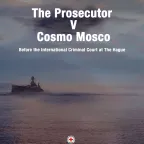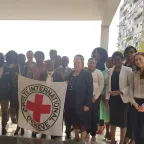Sudan: training certificates' policy of the ICRC
… it holds special immunity, granted by the Geneva Conventions, against participating in trials or …
… it holds special immunity, granted by the Geneva Conventions, against participating in trials or …
… humanitarian law (IHL) with the fourth Geneva Convention of 1949 that specifically … commitment and our mandate under the Geneva Conventions. We also know that each day …

… approach Governments, as states party to the Geneva Conventions, are the ICRC’s main funders, along …

… that many people no longer believe that the Geneva Conventions prevent wars from getting worse. … almost all relevant IHL treaties and conventions. It is also one of the first Asian …

… humanitarian organization, based in Geneva, Switzerland. The ICRC has been … c) ICRC Commentaries to the Geneva Conventions and their Additional …

… humanitarian mandate that stems from the Geneva Conventions of 1949. It helps people around the … sadavies@icrc.org , Christoph HANGER, ICRC Geneva , tel: +41 79 731 04 03, email: …

… 29-03-2022 Geneva (ICRC) – As the international armed … to fulfil their obligations under the Geneva Conventions without further delay. The …
… in Art. 90 of Protocol I additional to the Geneva Conventions. Implementation is an ongoing … in 1863, the ICRC is at the origin of the Geneva Conventions and the International Red …
… of the 1977 Additional Protocols to the Geneva Conventions, the importance of complying with …

… The rules of war are universal. The Geneva Conventions (which are the core element of IHL) …
Try one of the following resources:
Created in 1863, the ICRC library, alongside the ICRC archives, provides an indispensable documentary reference on the organization itself and international humanitarian law.
International humanitarian law is based on a number of treaties, in particular the Geneva Conventions of 1949 and their Additional Protocols, and a series of other instruments.
Customary international humanitarian law consists of rules that come from "a general practice accepted as law" and that exist independent of treaty law.